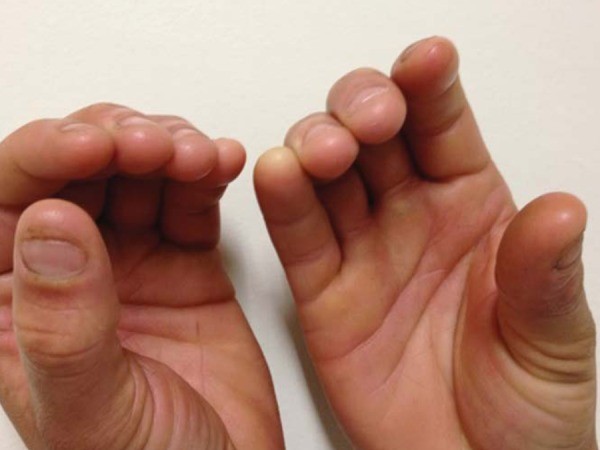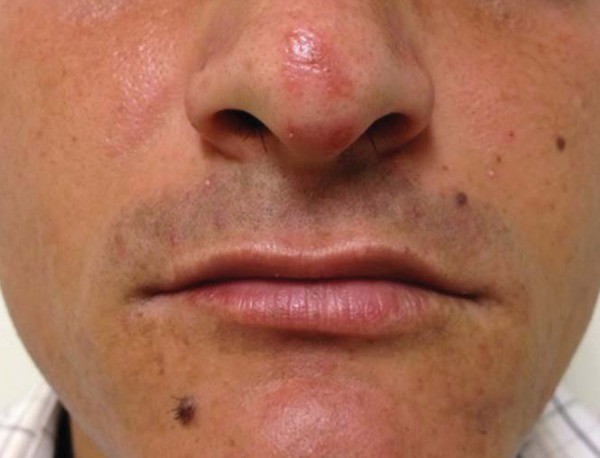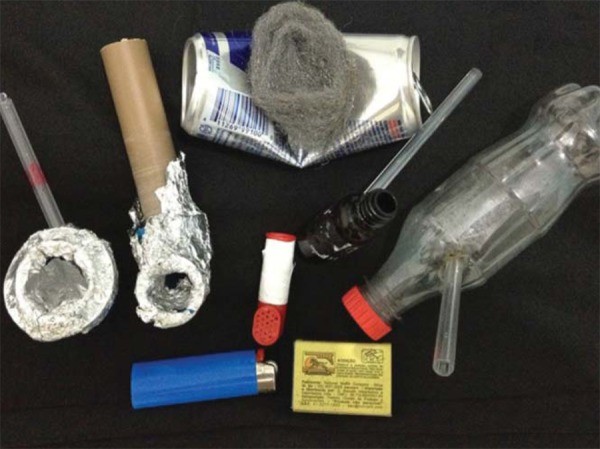Fingertip and nasal tip thermal burn in crack cocaine user

http://www.ncbi.nlm.nih.gov/pmc/articles/PMC3798375/
Abstract
A dependência química do crack é um problema de saúde pública no Brasil. Trata-se de uma endemia que afeta a zona rural e a zona urbana. O Ministério da Saúde lançou programas emergenciais para o tratamento dos dependentes e o combate ao tráfico de drogas. Reconhecer os sinais dermatológicos iniciais desta doença é importante, pois através deles, pode-se suspeitar do diagnóstico e então proporcionar ao paciente o tratamento precoce.
Crack is an illicit substance made by dissolving cocaine hydrochloride in water and adding a base, usually sodium bicarbonate. This solution is heated, crystallizes and forms cocaine rock-like chunks. As they vaporize at low temperatures, they are adequate for smoking.1,2 The name crack is onomatopoeic and refers to the sound produced by the water content when it boils and the cracking sounds heard when the chunks are heated.
Drug dependence is marked by use compulsion and its effects are vasoconstriction, mydriasis, hyperthermia, tachycardia, hypertension, tremors, vertigo, muscle spasms and paranoia.2,3 Sudden death may occur, usually as the result of cardiac arrest as consequence of seizures and cardiac arrhythmias.
Crack users may present punctiform, hyperkeratotic and dark lesions on the hands or fingertips attributed to burns caused by the pipe used to smoke the drug. Perniosis and atrophy of digital pulps may also occur due to ischemia resulting from peripheral vasoconstriction induced by drug use. These thermal lesions may lead to microscopic necrosis foci. The hot vapors emanated during consumption produce madarosis in the user.3,4,5 Early alterations may resolve simply with abstinence.
We describe here the case of a 32-year-old male patient, who arrived at the hospital emergency room with intense cephalalgia, palpitation and vertigo. He mentioned having used crack in the previous night, after seven months of abstinence. The physical examination showed: BP 150 x 90 mmHg; HR 110 bpm; axillary temperature 36.5ºC; regular cardiac rhythm with two normal heart sounds without murmurs; vesicular murmur present and symmetrical, without respiratory sounds; isochoric and photoreacting pupils. The dermatological examination revealed perniosis and atrophy of the digital pulps, erythema and desquamation of fingertips of the 1st and 2nd right digits and of the nose tip (Figures 1 to to3). The3). The patient reported having burned the digits by holding the pipe used to smoke crack and the nose tip with the lighter flame (Figure 4). He received clinical support at the emergency room to stabilize the symptom complex, followed by orientation and referral for substance dependence treatment.
Atrophy of digital pulps with erasure of dermatoglyphics due to crack use
Thermal burn on the tip of the nose caused by the lighter flame
Objects used for crack consumption: several handcrafted pipes and aluminum cans
Crack cocaine addiction is a public health problem in Brazil. In 2011, the Ministry of Health launched an emergency plan: “It is possible to win”, targeting the treatment of addicts. The main actions focused on three points: health care, which prioritizes assistance to the drug addict and family members, combat of drug trafficking and prevention.
Recognition of the initial dermatological signs of this disease, such as those observed in this case, is important, as through them it is possible to suspect the diagnosis even if the patient omits his/her dependence, and then refer him/her for early treatment.



